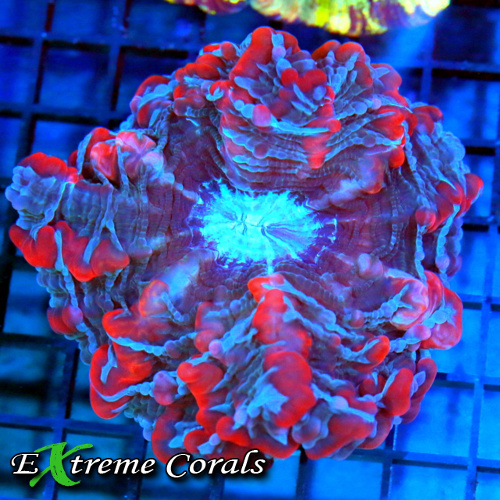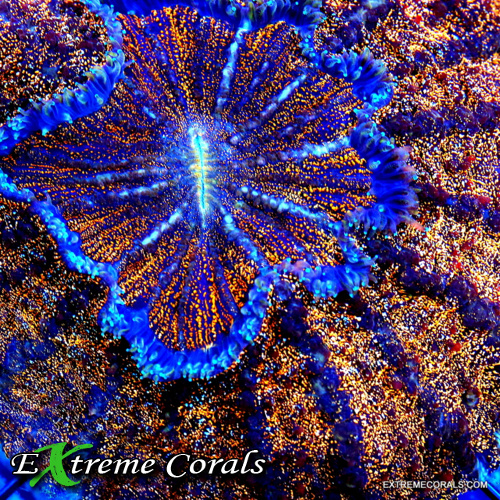Extreme Corals News and Updates
Our Guide to Acanthophyllia, Cynarina, and Indophyllia Corals: Identification, Care, and Comparison
Master the Art of Reef Keeping with Essential Tips on Identification and Care
Discover the unique characteristics, care requirements, and key differences of Acanthophyllia, Cynarina, and Indophyllia corals. This comprehensive guide provides valuable insights for both novice and experienced reef enthusiasts. Enhance your aquarium with these vibrant and captivating coral species
by scott Shiles • June 05, 2024
Introduction to Acanthophyllia Coral
Acanthophyllia coral, often celebrated for its large, colorful polyps, is a stunning addition to any reef aquarium. These LPS corals, known for their intricate patterns and vibrant hues, are highly sought after by reef enthusiasts. Typically found in tropical waters, Acanthophyllia corals are prized for their beauty and the dynamic visual impact they bring to an aquarium. However, to thrive, they require proper care and attention in a home aquarium setting (Borneman, 2001).
Characteristics of Acanthophyllia Coral
Acanthophyllia corals are distinguished by their large, fleshy polyps and unique skeletal structure with ridged walls. These corals display a variety of vibrant colors, including bright greens, reds, deep purples, and blues. To flourish in an aquarium, they prefer moderate water flow and moderate to high lighting levels. The combination of these elements helps maintain their health and enhance their natural beauty (Veron, 2000).
Understanding Cynarina Coral
Cynarina corals are known for their distinctive appearance, with large, fleshy polyps that come in various colors such as green, red, and blue. Prized for their hardiness and adaptability, Cynarina corals can thrive in a range of tank conditions, making them a popular choice for reef enthusiasts. Notably, these corals exhibit rapid growth rates compared to other species, which appeals to beginners aiming to establish a vibrant reef tank (Sprung, 2006).
Key Features of Cynarina Coral
Cynarina corals often showcase vibrant colors, including green, red, and orange, and have a distinct round shape with tentacles surrounding their mouth. This unique appearance makes them a dynamic addition to any reef tank. Their hardiness and adaptability make them suitable for both novice and experienced reef keepers. Cynarina corals thrive under moderate to high lighting and moderate water flow. When feeding, their large polyps extend outward, adding a captivating element to the tank (Delbeek & Sprung, 1994).
Exploring Indophyllia Coral
Indophyllia coral, also known as lobed brain coral, is renowned for its intricate maze-like patterns and vibrant colors. This coral thrives in moderate to bright light conditions, making it a favored choice for reef tank enthusiasts seeking a visually striking addition. Indophyllia coral adds depth and texture to aquarium landscapes, creating a captivating focal point. Proper care involves maintaining stable water parameters and providing regular feedings to ensure the health and vibrancy of the coral (Veron, 2000).
Noteworthy Traits of Indophyllia Coral
Indophyllia corals are known for their vibrant colors, which can range from shades of green, blue, and purple to red hues. Their intricate surface patterns make them a unique addition to any reef aquarium. Collectors often prize Indophyllia corals for their striking appearance and rarity compared to other coral varieties. These corals require stable water conditions and moderate to high lighting to thrive (Borneman, 2001).
Acanthophyllia vs. Cynarina vs. Indophyllia Corals: A Comparison
While Indophyllia, Acanthophyllia, and Cynarina corals share similarities, they have distinct differences:



Understanding these differences can help you select the right coral for your aquarium, ensuring they thrive in their environment (Sprung, 2006).
Care Tips for Acanthophyllia, Cynarina, and Indophyllia Corals
Consistency in care is crucial for the thriving of these corals. Here are some essential tips:
- Lighting: Provide moderate to high lighting levels to support photosynthesis.
- Water Parameters: Maintain stable and pristine water conditions, including proper levels of calcium, alkalinity, and magnesium.
- Feeding: Occasionally target feed small meaty foods such as zooplankton or mysis shrimp to encourage growth.
- Placement: Position corals in the lower to middle portions of the aquarium for adequate light and water flow.
- Monitoring: Regularly observe health and coloration to detect any issues early and ensure their well-being (Delbeek & Sprung, 1994).
Common Challenges and Solutions for These Corals
Challenges such as shading, aggressive neighbors, and water parameter fluctuations can affect these corals. To overcome these issues:
- Ensure proper spacing to prevent shading.
- Manage aggressive behavior through careful placement or physical barriers.
- Maintain stable water conditions by regularly monitoring and adjusting parameters.
- Provide quality lighting and nutrient control to promote health and growth (Borneman, 2001).
Conclusion: Choosing the Right Coral for Your Aquarium
Selecting the right coral depends on your preferences and the specific needs of your tank. Consider the following points:
- Acanthophyllia Coral: Offers vibrant colors and unique patterns, but requires regular feeding and adequate space.
- Cynarina Coral: Known for its beautiful appearance and tolerance to various light conditions, suitable for diverse tank setups.
- Indophyllia Coral: A rare and prized addition, valued for its distinct appearance and ability to thrive in well-maintained aquariums.
Evaluate your tank's lighting, water flow, and the level of care you can provide before making a decision. The right coral will enhance the beauty and diversity of your aquarium, creating a healthy environment for your aquatic pets (Sprung, 2006).
References
- Borneman, E. H. (2001). Aquarium Corals: Selection, Husbandry, and Natural History. TFH Publications.
- Delbeek, J. C., & Sprung, J. (1994). The Reef Aquarium: A Comprehensive Guide to the Identification and Care of Tropical Marine Invertebrates. Ricordea Publishing.
- Sprung, J. (2006). Corals: A Quick Reference Guide. Ricordea Publishing.
- Veron, J. E. N. (2000). Corals of the World. Australian Institute of Marine Science.

.jpg)